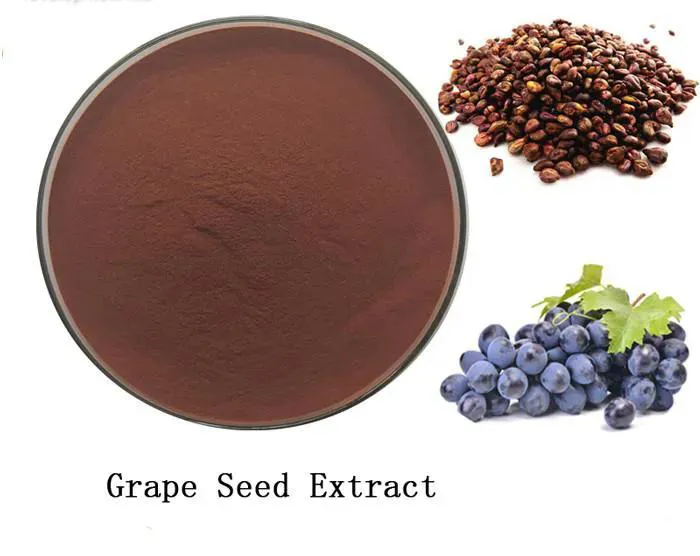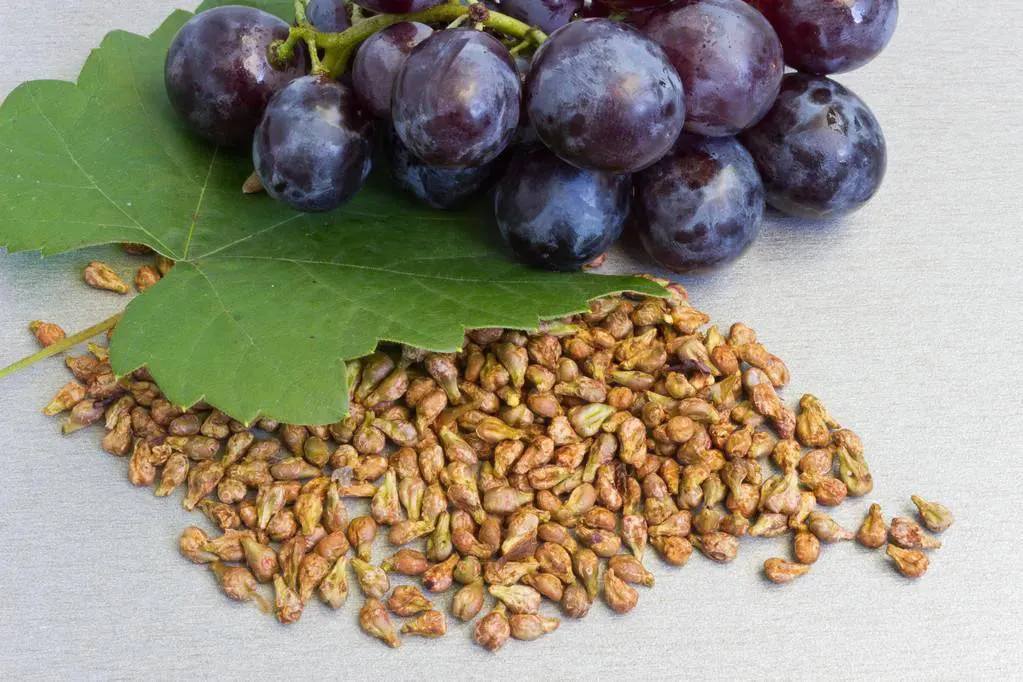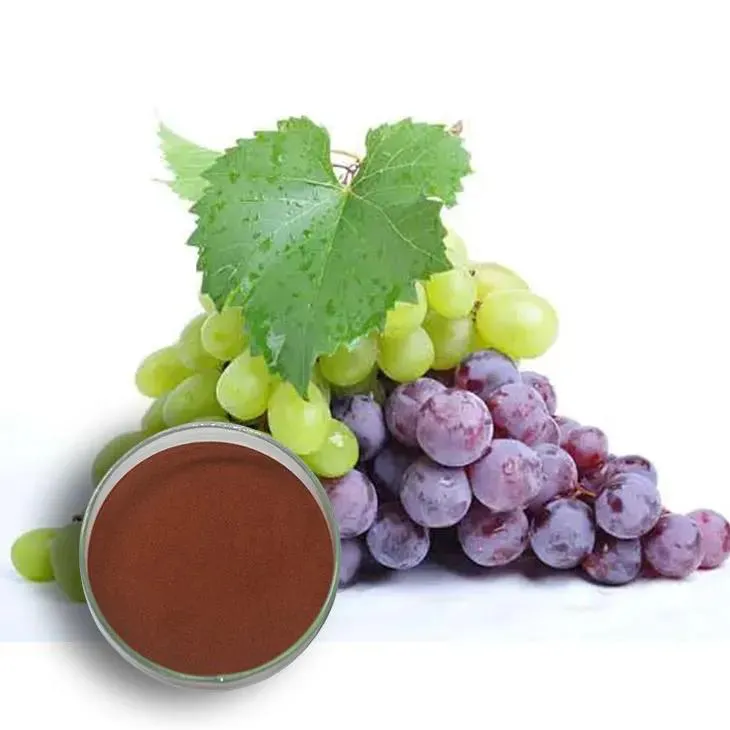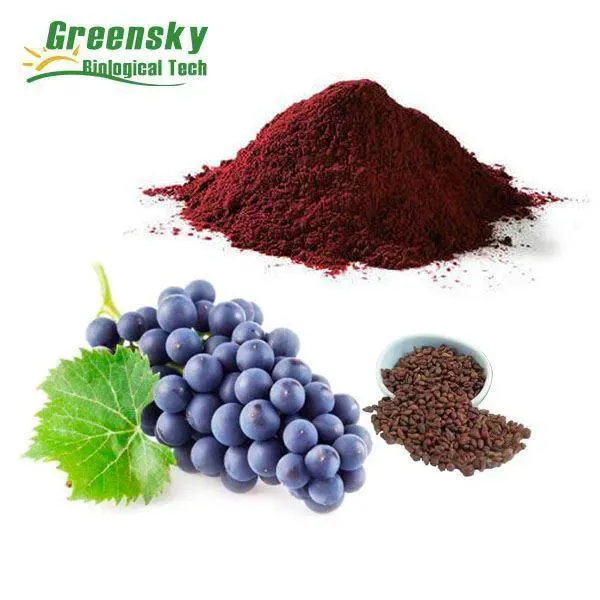- 0086-571-85302990
- sales@greenskybio.com
From Vine to Health: Unveiling the Secrets of Grape Seed Extract and Red Yeast Rice
2024-08-06

1. Introduction
The journey from the vine to health is an interesting one, especially when we consider two remarkable substances: Grape Seed Extract and red yeast rice. These two products, derived from different parts of the vine family, have been the focus of much research due to their potential health benefits. Grape Seed Extract is renowned for its antioxidant, anti - inflammatory, and heart - healthy properties. Red yeast rice, on the other hand, has a long history in traditional medicine, particularly in Asian cultures.

2. Grape Seed Extract
2.1 Chemical Composition
Grape seed extract is rich in polyphenols, especially proanthocyanidins. These compounds are powerful antioxidants that can scavenge free radicals in the body. Free radicals are unstable molecules that can cause damage to cells, leading to various health problems such as aging, heart disease, and cancer. The proanthocyanidins in grape seed extract are thought to be more effective than vitamin C and E in neutralizing free radicals.
2.2 Anti - Inflammatory Properties
One of the most significant benefits of grape seed extract is its anti - inflammatory effect. Inflammation is a natural response of the body to injury or infection, but chronic inflammation can be harmful. Grape seed extract can help reduce inflammation by inhibiting certain enzymes and cytokines involved in the inflammatory process. For example, it can suppress the production of interleukin - 1β (IL - 1β) and tumor necrosis factor - α (TNF - α), two key inflammatory mediators.
2.3 Heart - Healthy Benefits
- Grape seed extract may help lower blood pressure. It does this by relaxing the blood vessels, allowing blood to flow more easily. This is partly due to its ability to increase the production of nitric oxide, a molecule that dilates blood vessels.
- It also has a positive effect on cholesterol levels. Grape seed extract can reduce LDL (low - density lipoprotein) cholesterol, often referred to as "bad" cholesterol, while increasing HDL (high - density lipoprotein) cholesterol, or "good" cholesterol. This helps to improve the overall lipid profile and reduce the risk of heart disease.
- Furthermore, the antioxidant properties of grape seed extract can protect the heart from oxidative stress. Oxidative stress can damage the heart muscle and blood vessels, leading to heart disease. By neutralizing free radicals, grape seed extract helps maintain the health of the cardiovascular system.
2.4 Other Potential Health Benefits
- Some studies suggest that grape seed extract may have anti - cancer properties. It may inhibit the growth and spread of cancer cells by interfering with their signaling pathways and inducing apoptosis (programmed cell death).
- Grape seed extract may also be beneficial for skin health. It can improve skin elasticity, reduce wrinkles, and protect the skin from UV damage due to its antioxidant properties. It can be used in topical creams or taken orally for skin - related benefits.
- There is evidence that it can improve cognitive function. It may protect the brain from oxidative damage and inflammation, which are associated with neurodegenerative diseases such as Alzheimer's and Parkinson's.

3. Red Yeast Rice
3.1 Traditional Use in Medicine
Red yeast rice has a long - standing history in traditional Chinese medicine. It has been used for centuries to treat various ailments, including indigestion, blood circulation problems, and diarrhea. In traditional medicine, it was believed to have a tonifying effect on the body, helping to balance the body's qi (vital energy) and blood.
3.2 Chemical Composition
Red yeast rice contains several bioactive compounds. One of the most important is monacolin K, which is chemically similar to the cholesterol - lowering drug lovastatin. Monacolin K inhibits an enzyme called HMG - CoA reductase, which is involved in the synthesis of cholesterol in the liver. By inhibiting this enzyme, red yeast rice can lower LDL cholesterol levels in the body.
3.3 Health Benefits
- As mentioned above, red yeast rice is effective in reducing cholesterol levels. This can significantly reduce the risk of heart disease, as high cholesterol is a major risk factor. Clinical trials have shown that red yeast rice supplementation can lead to a significant decrease in LDL cholesterol levels, similar to the effect of some prescription cholesterol - lowering drugs.
- It may also have anti - inflammatory properties. Although not as well - studied as grape seed extract in this regard, some research suggests that red yeast rice can reduce inflammation in the body. This may be due to its effect on various inflammatory pathways and the modulation of cytokines.
- Red yeast rice has been investigated for its potential in improving blood circulation. In traditional medicine, it was used to promote blood flow, and modern research is beginning to explore the mechanisms behind this. It may help prevent blood clots and improve the function of the blood vessels.

4. Comparing Grape Seed Extract and Red Yeast Rice
4.1 Similarities
- Both grape seed extract and red yeast rice have potential heart - healthy benefits. They can both contribute to reducing the risk of heart disease, although through different mechanisms. Grape seed extract mainly through antioxidant and anti - inflammatory effects, while red yeast rice mainly through cholesterol - lowering effects.
- They also both have anti - inflammatory properties to some extent. Inflammation is a common factor in many chronic diseases, and these two substances can play a role in reducing chronic inflammation in the body.
4.2 Differences
- Their chemical compositions are quite different. Grape seed extract is rich in polyphenols, while red yeast rice contains monacolin K and other bioactive compounds.
- Their main health benefits also have some differences. Grape seed extract has a wider range of potential benefits, including anti - cancer, skin health, and cognitive function, while red yeast rice is mainly focused on cholesterol - lowering and blood circulation improvement.

5. Practical Applications in Maintaining Good Health
5.1 Dietary Sources
- Grape seed extract can be obtained from grape seeds, which are a by - product of the wine - making industry. It is also available in supplement form. Grapes themselves are a rich source of antioxidants, and consuming whole grapes can also provide some of the benefits associated with grape seed extract. However, the concentration of active compounds in grape seeds is much higher.
- Red yeast rice is typically obtained from fermented red yeast on rice. It can be consumed as a food ingredient in some Asian cuisines, such as in certain types of rice dishes or fermented products. It is also available in supplement form for those who want to take it for its health benefits.
5.2 Supplement Use
- When considering grape seed extract supplements, it is important to choose a high - quality product. Look for products that are standardized to a certain percentage of proanthocyanidins. Dosage may vary depending on the intended use, but generally, a daily dose of 100 - 300 mg is often recommended for general health benefits.
- For red yeast rice supplements, it is crucial to be aware of the potential side effects, especially since it contains a compound similar to a prescription drug. It is advisable to consult a healthcare provider before starting red yeast rice supplementation. The dosage also needs to be carefully determined based on individual health conditions and cholesterol levels.
6. Conclusion
Grape seed extract and red yeast rice are two fascinating substances that offer a variety of potential health benefits. Grape seed extract, with its rich polyphenol content, has antioxidant, anti - inflammatory, and a wide range of other health - promoting properties. Red yeast rice, with its monacolin K and traditional medicinal uses, is mainly known for its cholesterol - lowering and blood - circulation - improving effects. While they have some similarities in terms of heart - healthy and anti - inflammatory benefits, they also have distinct differences in their chemical compositions and main areas of health impact. Understanding these two substances can help individuals make informed decisions about incorporating them into their diet or supplement regimen for maintaining good health.
FAQ:
What are the main components in grape seed extract?
Grape seed extract is rich in proanthocyanidins, which are a type of flavonoid. These proanthocyanidins are powerful antioxidants. It also contains other phenolic compounds and oligomeric proanthocyanidin complexes (OPCs). These components contribute to its anti - inflammatory and heart - healthy properties.
How does red yeast rice work in traditional medicine?
Red yeast rice has been used in traditional medicine for centuries. It contains natural compounds such as monacolin K. In traditional medicine, it is believed to help regulate cholesterol levels, improve blood circulation, and have some antioxidant effects. However, it should be used with caution as it may also have potential side effects.
Can grape seed extract really help with heart health?
Yes, grape seed extract can be beneficial for heart health. The antioxidants in it, especially proanthocyanidins, help reduce oxidative stress in the body. This oxidative stress is linked to various heart diseases. Grape seed extract may also help in reducing inflammation in the blood vessels, improving endothelial function, and potentially lowering blood pressure.
What are the potential side effects of red yeast rice?
Red yeast rice may have some potential side effects. One of the main concerns is that it can cause liver damage in some cases. Also, since it contains compounds similar to statin drugs (such as monacolin K), it may lead to muscle pain, weakness, and in rare cases, more serious muscle - related problems. People with pre - existing liver or muscle conditions should be especially cautious when using red yeast rice.
How can one incorporate grape seed extract and red yeast rice into their daily health routine?
Grape seed extract can be taken as a supplement in the form of capsules. It can also be found in some skincare products for its antioxidant benefits. Red yeast rice is often available as a supplement. However, before incorporating either into your daily routine, it is important to consult a healthcare provider, especially if you are taking other medications or have underlying health conditions.
Related literature
- The Health Benefits of Grape Seed Extract: A Review"
- "Red Yeast Rice in Traditional and Modern Medicine"
- "Antioxidant Properties of Grape Seed Extract and Their Impact on Heart Health"
- ▶ Hesperidin
- ▶ Citrus Bioflavonoids
- ▶ Plant Extract
- ▶ lycopene
- ▶ Diosmin
- ▶ Grape seed extract
- ▶ Sea buckthorn Juice Powder
- ▶ Fruit Juice Powder
- ▶ Hops Extract
- ▶ Artichoke Extract
- ▶ Mushroom extract
- ▶ Astaxanthin
- ▶ Green Tea Extract
- ▶ Curcumin
- ▶ Horse Chestnut Extract
- ▶ Other Product
- ▶ Boswellia Serrata Extract
- ▶ Resveratrol
- ▶ Marigold Extract
- ▶ Grape Leaf Extract
- ▶ New Product
- ▶ Aminolevulinic acid
- ▶ Cranberry Extract
- ▶ Red Yeast Rice
- ▶ Red Wine Extract
-
Peppermint Extract Powder
2024-08-06
-
Europen Bilberry Extract
2024-08-06
-
Motherwort Extract
2024-08-06
-
Andrographis Paniculata Extract Powder
2024-08-06
-
Resveratrol extract
2024-08-06
-
Cactus Extract
2024-08-06
-
Honeysuckle Pollen
2024-08-06
-
Pomegranate Extract
2024-08-06
-
Lycopene
2024-08-06
-
Cassia Seed Extract
2024-08-06





















